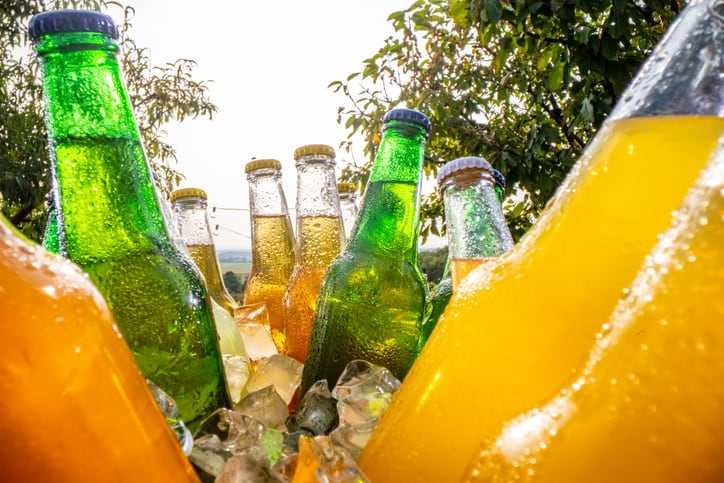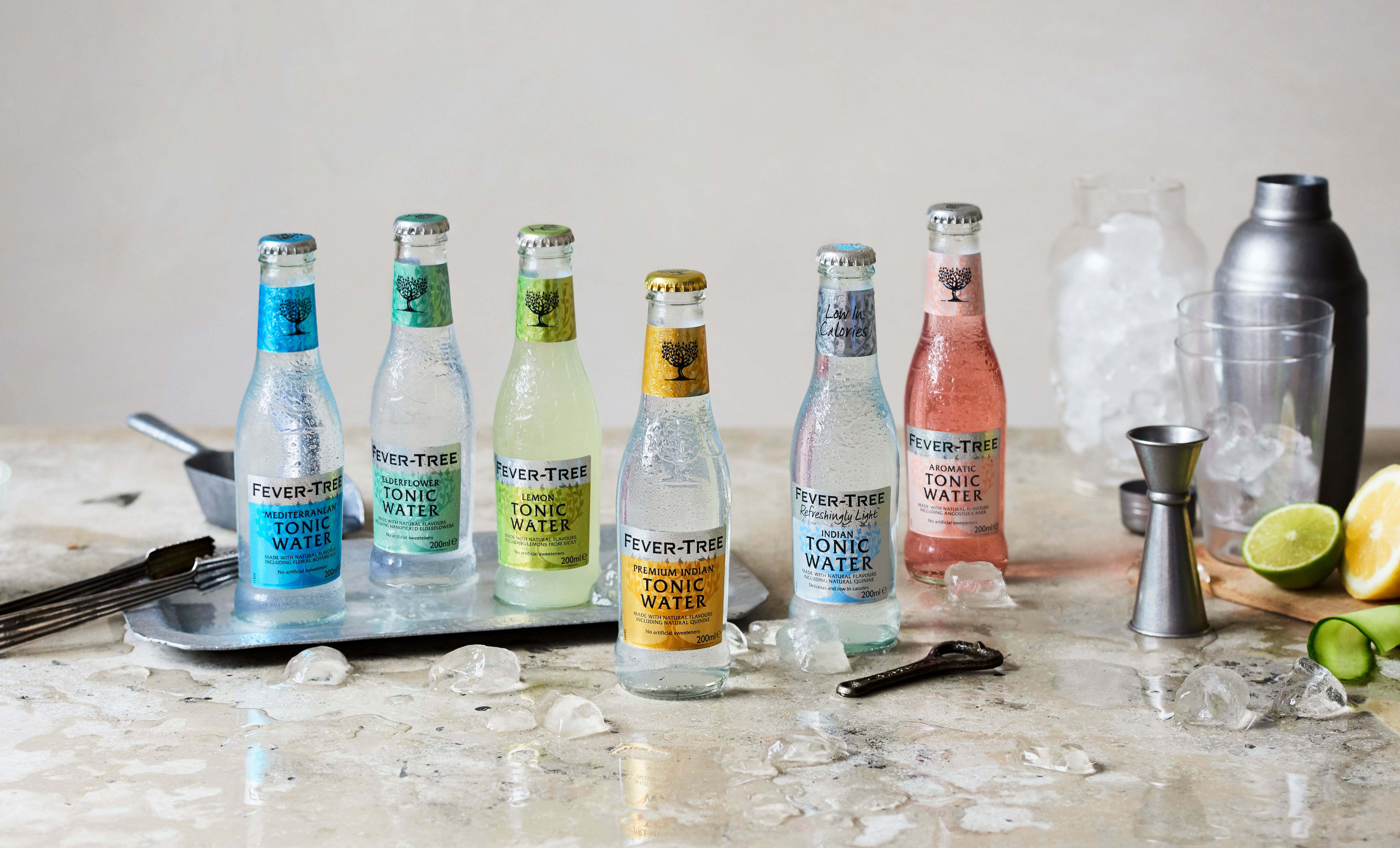The acquisition of Britvic in the UK has shifted Carlsberg’s soft drinks focus: from a category making up 16% of the Danish beer giant’s portfolio to nearly 30%. Include Carlsberg’s growing alcohol-free portfolio and that rises to 32%.
But it’s not just about the Britvic acquisition: it’s about a wider shift to encompass soft drinks across the company.
Soft drinks help build ‘strong moats’ around beer
The challenges in the beer industry are well-known: struggling volumes, reduced demand, competition from other categories, raw material costs and less interest from consumers in alcohol altogether.
Increasing its focus beyond the core beer portfolio has been a priority for Carlsberg over the last few years. That means increasing a focus on soft drinks, but also categories such as alcohol-free brews (which have grown consistently for Carlsberg over recent years, most recently up 6% in 2024).
This focus is less about moving away from beer, says CEO Jacob Aarup-Andersen – but more about ‘how we can strengthen our beer business in a market by complementing it with great brands around it’.
That is a way for Carlsberg to ensure it is where consumers are – whether they’re drinking beer or not.
“We are a brewer at the core. Both in our DNA, but also in our product portfolio, our mix,” said Aarup-Andersen, speaking in the company’s FY2024 earnings call this month and reflecting on a year of ‘major events that will shape the future of Carlsberg’ (which includes the acquisition of Britvic; the buyout of its partner in India and Nepal and the expanded partnership with PepsiCo in Kazakhstan and Kyrgyzstan; and disposal of the Russian business).
“We see soft drinks and Beyond Beer [alcoholic drinks such as cider and RTDs] as a very attractive way of ensuring that we create strong moats around our beer business by maintaining relevance towards consumers no matter what their occasion is,” he said.
“What is important for Carlsberg is to use our strong beer core to develop product portfolios that ensure that we can cater to the client, the consumer, no matter where they are.”
The second key advantage of making moves in soft drinks is the overlap with beer.
“We see significant benefits in the interplay between beer and soft drinks or beer and beyond beer when we have those portfolios together,” said Aarup-Andersen. “So it’s highly synergistic. It creates a lot of value, and it makes sure that Carlsberg stays relevant as we look decades out in terms of these consumer trends.”
Carlsberg FY2024
- Group organic volume growth +0.4%
- Growth categories (volume): premium beer +2%, alcohol-free brews +6%, Beyond Beer +5% and soft drinks +1%
- Organic volume development in Western Europe -1.1%, Asia -1.0% and Central & Eastern Europe and India (CEEI) +4.0%.
- Organic revenue growth +2.4%
- Organic operating profit growth +6.0%
‘Soft’ skills
While the Britvic acquisition represents a large-scale change in focus, Carlsberg has, in fact, had soft drinks in its portfolio for more than 30 years.
That includes long-standing bottling relationships with heavy-weights The Coca-Cola Company and PepsiCo.
The acquisition of Britvic further strengthens that partnership with PepsiCo, making Carlsberg its largest bottler in Europe and one of the largest worldwide.
Meanwhile, Carlsberg has entered into a bottling agreement with PepsiCo for Kazakhstan and Kyrgyzstan that will come into effect in Q1 2026. The agreement will double its business in Kazakhstan, putting the market among the Group’s top 10 markets.
On taking over the licence in these two markets, Carlsberg will have a fully integrated total beverage and bottling business in 11 markets.
“There are considerable synergies between beer and soft drinks due to similarities in production and the frequency of servicing customers,” explains Aarup-Andersen, looking at the advantages of the Britvic deal.
“We know that well from other markets as we’ve been operating fully integrated beer and soft drinks businesses for more than 30 years. The benefits are in all areas of the value chain, from procurement to production, distribution, customer service and back office.
“There are obvious synergies in back office and administration, where duplicative tasks can be eliminated quite easily and advantages can be achieved from economies of scale. In procurement, attractive synergies come from scale benefits in several areas.
“The most significant is packaging due to the increasing overlap in pack formats, particularly cans and glass bottles. Another example is point-of-sale materials such as glassware and coolers.
While beer remains our core business, we are increasing our exposure to structurally growing non-alcoholic categories in markets where we can leverage scale and route to market to deliver strong long-term operational and financial performance as well as value creation.
Carlsberg
“In production, similar pack formats across beer and soft drinks mean that they can run on the same lines, improving utilization rates and efficiencies and reduce costs.”
Furthermore, there are significant synergies in logistics and distribution in areas such as combined warehousing and improved inventory management.
“From experience, we know that there are multiple benefits for both on- and off-trade customers,” continued Aarup-Andersen. “A one-stop shop portfolio helps solve unmet customer needs, for example, by offering access to the wider product portfolio from one point of contact, simplifying administrative work and increasing frequency of deliveries.
“Other advantages of having a broader and stronger portfolio is the ability to act as a door opener and facilitate selling of sub brands. We expect sales synergies coming from cross-selling, for example, selling the Britvic portfolio to Carlsberg’s on-trade customers or the Carlsberg portfolio to Britvic off-trade customers not currently serviced by Carlsberg.”
Turbocharging innovation capabilities
The acquisition of Britvic will help the company put soft drinks at the core of its business in the UK in a new, highly-integrated way.
“We are step-changing our business in the UK, creating a single, integrated company, applying the same operating model that we have successfully set up in other markets with commercial and synergistic benefits. By integrating our two businesses fully throughout the value chain, we will leverage scale and deliver strong operational and financial performance.”
Carlsberg
That combined business will become one of the leading beverage companies in the UK and the largest with a combined beer and soft drinks portfolio.
Here, Carlsberg’s portfolio now includes: beer, alcohol-free beer, cider, tonic water, iced coffee, plant-based milks, kombucha and more.
But what’s most exciting is the future potential, says Aarup-Andersen.
Terrific tonic: Fever-Tree vs London Essence
Molson Coors has just taken an 8.5% stake in UK tonic water Fever-Tree .
Fever-Tree is an attractive brand for Molson Coors because it sits at the intersection of beer and non-alc and is often available in stores where beer is sold.
That means it ‘perfectly complements’ Molson Coors’ Beyond Beer and premiumization strategies, playing in both alcohol occasions and non-alc occasions, said the company.
Carlsberg, meanwhile, has obtained fellow UK brand London Essence – a ‘phenomenal tonic brand with a lot of potential’ via its acquisition of Britvic.
One of the attractions of Britvic, says Aarup-Andersen, is the significant investment in R&D and innovation seen over multiple years.
“I personally had the pleasure of visiting the R&D center already: it’s been a high innovation pipeline across different types of soft drinks.
“We see an opportunity to continue to drive innovation in the UK marketplace, which is, of course, also important for the Britvic portfolio.
“The second element is this gives us a significant shift in our capabilities within non-alcoholic innovations, which we can leverage across all of our soft drinks markets together with our partners in those markets.
“And the third element, longer term, it can also drive innovation within the Beyond Beer and that means also the alcoholic Beyond Beer space.”



